I had read much about the famous patola weaving from Patan, the old capitol of Gujarat 150km away from Ahmedabad. More research revealed that there is a museum dedicated to this intricate double ikat weave: the Patan Patola Heritage Museum – the product of 35 generations of the Salvi family going back to the 11th century.
For those who are not familiar with double ikat weaving, the process if an extremely complicated one. First the warp and weft silk threads are tied separately with cotton thread on the sections marked out according to the proposed design. This tying process will protect the thread from taking up the dye. After dying, more sections are tied & different shades of colour are produced in this manner. It is not until all the threads on warp and weft are coloured to the desired design that the weaving begins and the final design is realised. I cannot imagine how much skill and training this process demands!
Because it is so specialised and difficult a technique, the Patan Patola is highly prized, with a simple sari costing about 1.5 lakh rupees, (about AU$150,000), and more as the intricacy increases, and each sari takes four to six months to weave if two people work on it five days a week. So it was with much excitement that I anticipated my visit to the museum.
There is also a famous stepwell in patan, the Rani ki Vav and on the way, the Sun Temple I had heard a lot about from locals. So my day in Patan was full with the promise of wonderful experiences, but I was most excited about visiting the museum.
I had earmarked Saturday to make the trip to Patan with Tausif, the hire car driver at my hotel. A friend said she wanted to come with me, but could only go on Sunday, so I agreed on Sunday for the trip. Like an idiot, I forgot to check to see if the Museum was open on the day, and it was only once I had arrived in Patan that I found it was not. The main attraction for me: closed. !!@*!#@&%!! (Expletives to self deleted). Needless to say, the credit for the images above – the Patan Patola Heritage Museum.
I’ve seen a lot of temples in India, and I am by now a little jaded when someone suggests I visit another one. Indians see the temples through the eyes of devotion and for me they are a visual feast only, and I have overindulged in that feast in the past – especially at the famous Kajuarho, which, because of the erotic nature of much of the carved decoration, is a must-see destination for Indians and foreigners alike. But one can see too many temples, even erotic ones, and to my shame, I found myself searching out other attractions near Kajuarho as the temples started to merge together for me as if through sleepy eyes. So a recommendation to see another famous temple…. maybe, maybe not.
Luckily, I had relented on missing the Sun Temple as Tausif kept insisting it was worth seeing, and so when it came to decision time – “turn off to Sun Temple madam?” – I said yes.
I knew as soon as we arrived that I had, for once, made the right choice. As I walked the neat paths set in green manicured gardens with shady trees, and gardeners sweeping leaves, the eleventh century jewel of a temple complex came into view. After all the gritty suburbs, chaotic traffic and dusty dun coloured countryside we had driven through, this was a relief for eyes and soul.
First I took the branching path to the museum. The low garden walls were topped with architectural fragments and I enjoyed inspecting these at close quarters. The museum houses more complete pieces, obviously removed form their original places within temples, and again, a joy to inspect the detailed carving closely. From the amount of less interesting stones and rubble seen in the grounds nearby, one can only guess that the complex had originally been much larger and these exhibits were all that was left of them.
Leaving the museum, the first monument one comes to is the Surya Kund – a beautifully carved stepped tank that was named after the sun god. Still holding water after all the centuries since its construction, the fine architectural details are doubled in perfect reflection.
The other two monuments are Sabha Mandap – the hall, where people would gather for discussions on religious topics and Guda Mandap – the sanctum sanctorum, also known as the main temple.
To say that the two structures are highly decorated is a gross understatement. From a distance they resemble those dribbled sand castles we made at the beach as kids, but there is no randomness here in the relentless decoration. Every surface on pillars, ceilings and walls is thick with wonderful imagery and plain undecorated surfaces can be measured in square centimetres. There are obviously many stories here, but that book was closed to me in the absence of a guide or any literature from the museum. And so I inspected the detailing, recognising where some of the fragments I had seen on the garden path might have come from, but not from either of these two buildings as they seem amazingly complete. Monkeys, elephants, people, some enjoying life more than others, gods, goddesses in an endless variety of occupations encrust the surfaces. I have included a few images to give some indication of the overwhelming amount of carving on the Sabha Mandap. Yes I was pleased to have taken the detour to the Sun Temple. It turned out to be the highlight of the day.
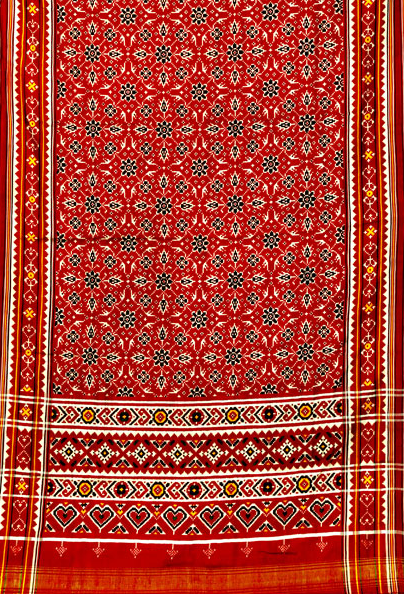

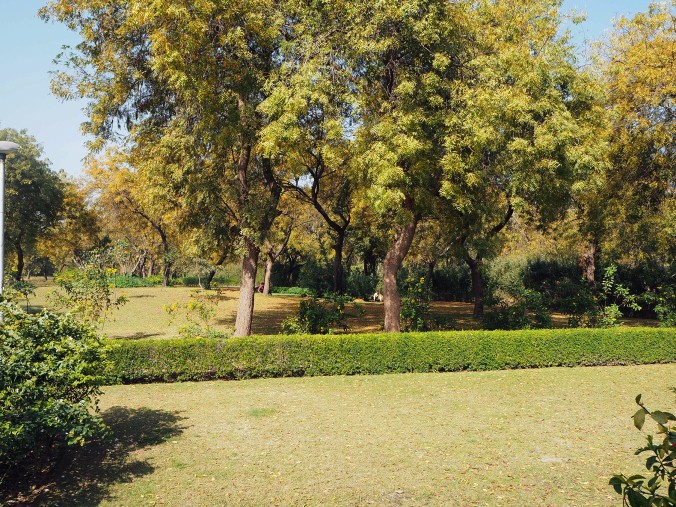
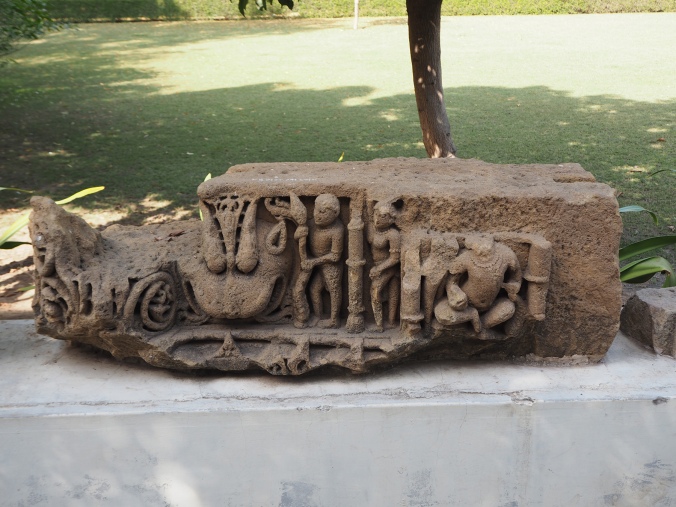
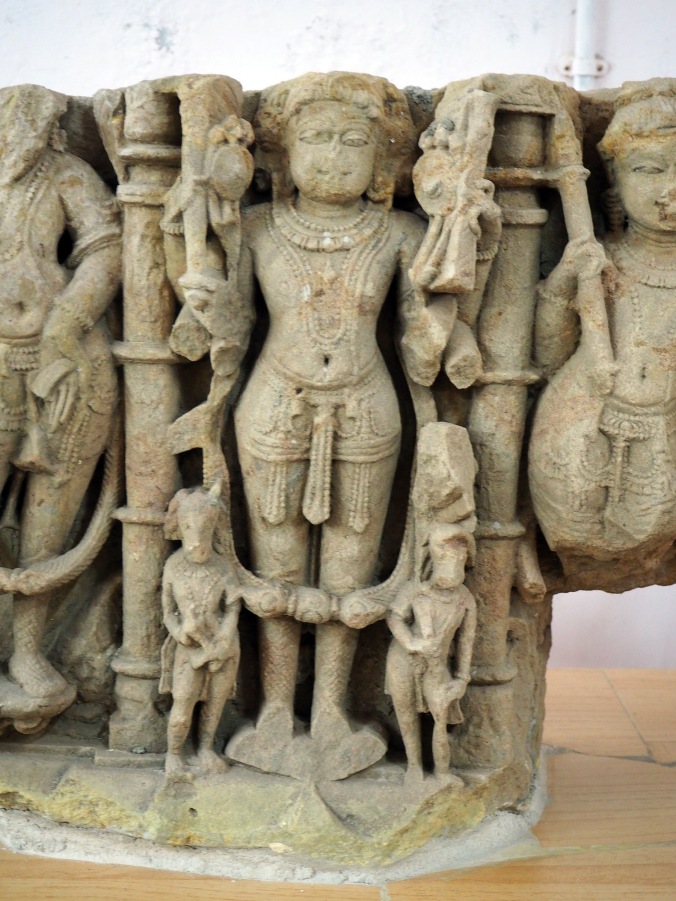


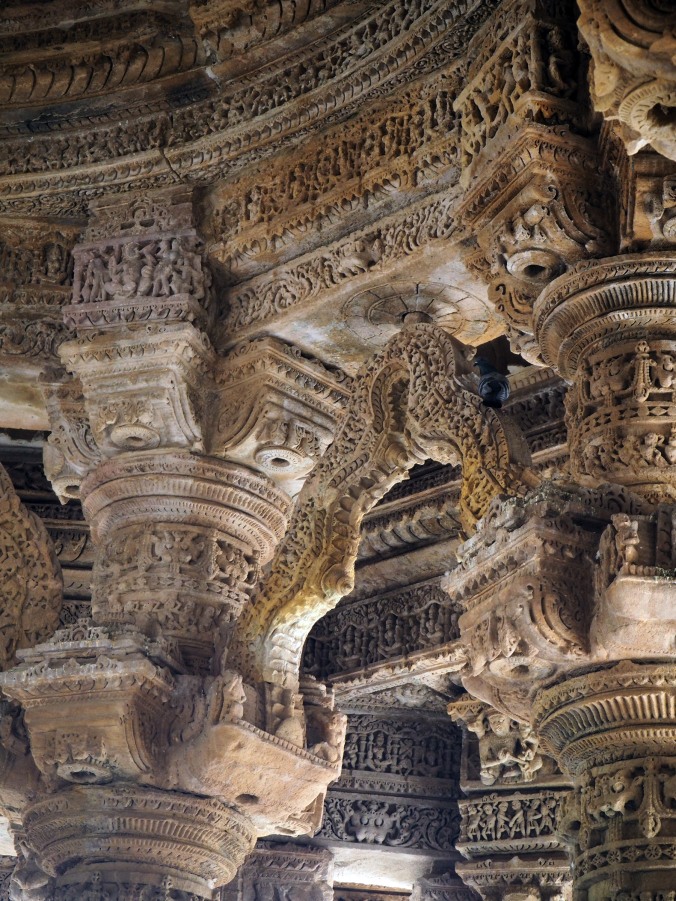

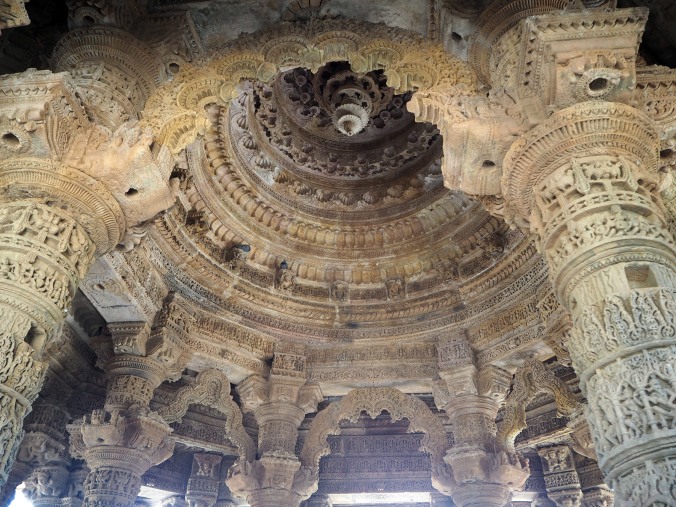


Wow I have never seen such beautiful architecture as in the sun temple. Although I have been to India 3 times I have seen only a fragment of its beauty and variety. Loved seeing the water tank- it would be nice to sit on the steps and take in all the time that has passed and still remains there as a living presence. Look forward to the next instalment
Debx
Sent from my iPhone
>
LikeLike
Yes, it’s a pretty amazing place! Wish you were here Deb.
LikeLike
Art and everyday life … soooo much in every corner of India it seems….
LikeLiked by 1 person
yep – it’s everywhere. I’d like to do a study one day on the compulsion to decorate and the myriad sources of that need to embellish. Could be a whole lifetime of study methinks….
LikeLike
Pingback: Leaving the city: a trip to Patan | Kasu Tours
Pingback: The Cloth & Stone Tour to Gujarat – destinations and experiences | Kasu Tours